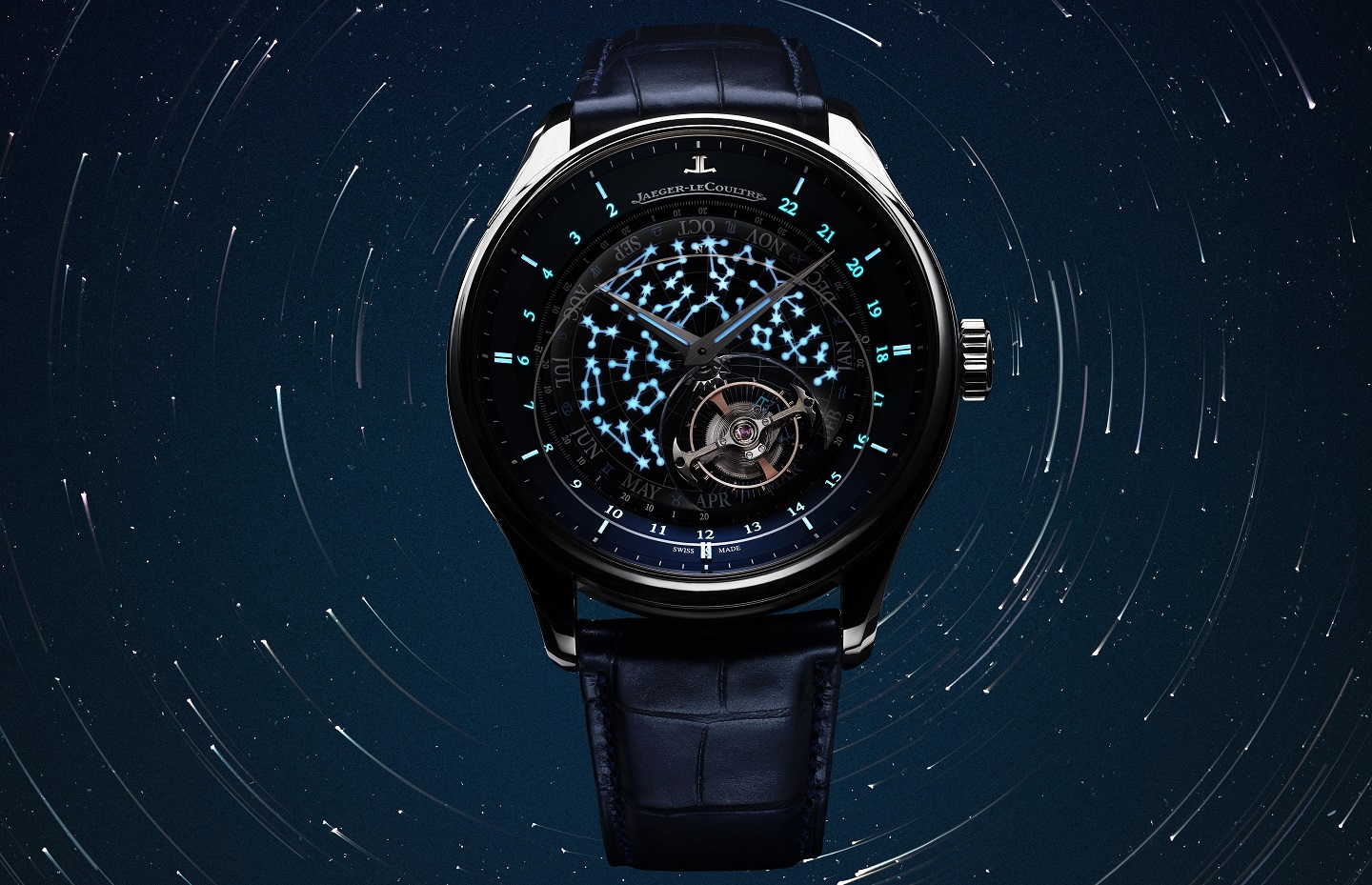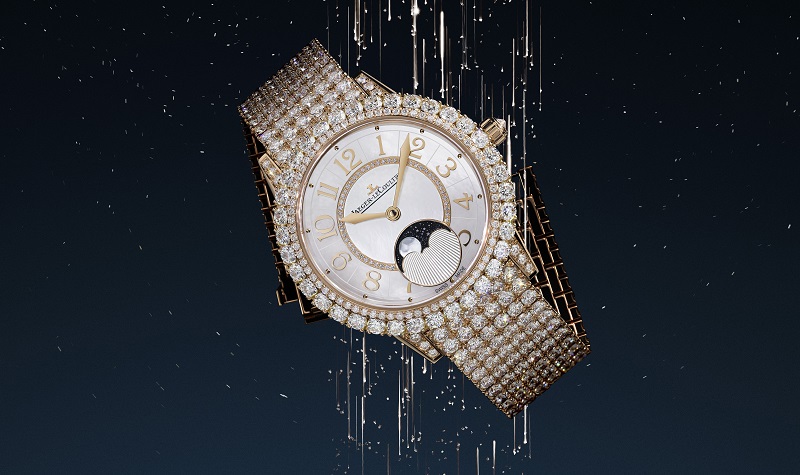
The facelifted Master Grande Tradition Tourbillon Céleste distinguishes itself from its predecessors by having visually simplified textures and indications
Recreating the exuberance of the night sky is Jaeger-LeCoultre’s new Master Grande Tradition Tourbillon Céleste, which draws from the constellations an exhibition for the wrist. Playing with the different perspectives of time on earth and in space is an orbital flying tourbillon that takes a sidereal day to complete a turn on the dial — the 23 hours, 56 minutes and 4 seconds are calculated based on the earth’s rotation on its axis in reference to stars more distant than the sun.
The deep blue dial depicts the sky chart through the zodiac calendar seen in the northern hemisphere, framed by an outer ring with corresponding symbols. A tiny gold marker just beyond the orbit of the flying tourbillon revolves around the dial annually to indicate where we are in this ancient star calendar. Super-Luminova imparts the ethereal glow of celestial bodies in the constellations and the 24-hour civil time markers that run anticlockwise around the periphery of the dial. Contributing to the measurement of time is a circlet of the months.
Readability sounds like it might be a challenge but the facelifted Master Grande Tradition Tourbillon Céleste distinguishes itself from its predecessors by having visually simplified textures and indications, encased in 43mm white gold. The case is part of a new generation of designs unveiled this year and protects the 334-component Calibre 946, which holds 45 hours of autonomy. The model’s limited run of 28 pieces befits its rarity as a timepiece that juxtaposes the rhythms of daily life with the movements of the universe.
Also looking to the skies is the Dazzling Rendez-Vous Moon, which explores the waxing and waning of the planet’s only permanent satellite with a delicate moonphase.
At the Swiss manufacture’s home in the Vallée de Joux, the full moon beams with unhindered brightness, inspiring Jaeger-LeCoultre to capture its romance and femininity in a complication. Mother-of-pearl acts as a dais as luminous as the astronomical body itself. Subtle details abound across it — in an outer ring, mirror-polished golden spheres accent the applied pink gold numerals below them, set on a separate mother-of-pearl tile for depth. An inner loop of diamonds is interrupted by the moonphase at 6 o’clock, the embodiment of artisanal craftsmanship with the mother-of-pearl moon journeying across a sky of stars within an aperture.
The entire tableau is encircled in pink gold and exalted with two concentric rings of diamonds that glitter with airy, carefree abandon. Fine gold claws give them the appearance of floating above the case, rather than anchored to it, and the river of stones flows on throughout the lugs, winding crown and down the bracelet. A total of 478 diamonds, weighing 24.7 carats, infuse the piece with a radiant aura.
dazzlingrendez-vousmoonfully-set-575503.jpg

Uniting the grand maison’s artistry with technical acumen, the Dazzling Rendez-Vous Moon is powered by the self-winding Calibre 925/A1, produced in-house and equipped with 38 hours of power per full winding. Admire its flawless construction and meticulous finishing through the sapphire crystal caseback, which also reveals details such as decorative circular graining and Côtes de Genève stripes, blued screws and the brand’s signature pink gold winding rotor.
Watchmakers have always sought to express astronomical phenomena in mechanical form, exercising the age-old instinct to understand the tempos of the cosmos. But try as they might to capture the magic of the moon and stars, these heavenly entities seem adamantly enigmatic — even on the wrist, they appear to remain a little out of reach.
This article first appeared in Retrograde 2019.



